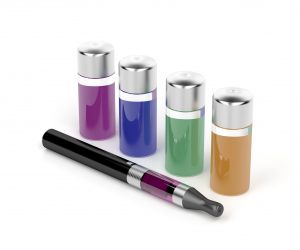 March is the month to spring forward with daylight saving time, enjoy the college basketball tournament and renew efforts to prevent poisonings through National Poison Prevention Week. Last March, Dr. Suzan Mazor, medical director of Toxicology at Seattle Children’s, gave advice for how to give and store medicines safely. This year, she’s sharing information on how to prevent childhood poisonings from a newer product – liquid nicotine used in electronic cigarettes, or e-cigs.
March is the month to spring forward with daylight saving time, enjoy the college basketball tournament and renew efforts to prevent poisonings through National Poison Prevention Week. Last March, Dr. Suzan Mazor, medical director of Toxicology at Seattle Children’s, gave advice for how to give and store medicines safely. This year, she’s sharing information on how to prevent childhood poisonings from a newer product – liquid nicotine used in electronic cigarettes, or e-cigs.
E-cigs and other Electronic Nicotine Delivery Systems became available in the U.S. about 10 years ago, and with their arrival came a growing number of calls to poison centers related to nicotine exposures in children.
E-cigs work by heating liquid nicotine and turning it into a vapor that can be inhaled or vaped. Much of the nicotine sold for these devices is flavored, comes in bright colors and is marketed with colorful packaging. There are close to 8,000 flavors available online.
“The flavoring increases the risk of poisoning as it makes the product more attractive to young children compared to cigarettes,” said Mazor.
A small amount is harmful
Liquid nicotine is very concentrated, and as little as one-third ounce can cause serious poisoning and even death to children. It can cause harm either when ingested or when absorbed through the skin or eyes, and quickly affects the heart, circulatory system, gastrointestinal system and nervous system. Symptoms can include nausea, excessive vomiting, lethargy, trouble breathing or eye pain, depending on the type and severity of exposure.
“Liquid nicotine is a low-dose poison,” explained Mazor. “The small amount in an e-cig chamber is enough to be highly toxic, especially to children under 3, who are at the highest risk of unintentional nicotine exposures.”
A growing concern
A study published in Pediatrics found that from January 2012 to April 2015, the monthly number of child exposures to e-cigarettes increased by about 1,500%. As more people began using e-cigs, the rate of childhood exposures rose drastically.
According to the Centers for Disease Control and Prevention, in 2015, 1 in 6 high school students reported using e-cigarettes in the past month. And in the first two months of 2017, the American Association of Poison Control Centers reports having already received 390 calls about e-cigarette devices and liquid nicotine exposures.
“E-cig use is increasing among traditional cigarette smokers who are looking to cut back, among people who are just curious and want to try something new, and among middle and high school students,” said Mazor. “As we see these products in increasing numbers of homes, we’ll see more exposures in children. For this reason, it’s important people take appropriate steps to keep liquid nicotine away from children.”
Prevent liquid nicotine exposures
Mazor shares these tips to prevent liquid nicotine exposures in children:
- Keep e-cig liquids and devices up and out of the reach and sight of young children. Consider using a locking cabinet, safe, or locking pouches or bags.
- Offer guests a place that is up and out of reach to store their belongings. Young children can get into purses, bags and coat pockets that are in reach, and can come into contact with e-cigs, medicines or other poisonous products a visitor may have with them.
- E-cig users should refill and use devices away from children.
- Safely throw away old containers of liquid nicotine, in a garbage container children can’t access.
- Get help to quit using nicotine.
- Be clear in telling your children that you don’t want them to use nicotine. Talk early and often.
- Advocate for the elimination of flavored liquid nicotine and continued enforcement of child-resistant packaging laws.
- Know the poison center number: 1-800-222-1222. Program the number in your cell phone and ask all of your child’s caregivers to do the same. Also post it by home phones.
- Call right away if you think a child has been exposed to an e-cigarette or liquid nicotine.
Mazor urges parents and caregivers to raise awareness about poison prevention among family and friends.
“People sometimes need reminders about how harmful products like e-cigs and marijuana are to young kids, despite the fact that they’re legal for adults in Washington state,” said Mazor. “Toddlers are curious and they explore the world with their mouths, so we have to be mindful of what is within their reach. We can all help prevent poisonings by keeping harmful items up, out of reach and out of sight in the places where children live and visit.”
Resources:
- Washington Poison Center 2016 Annual E-Cigarette Report
- Poison Prevention Home Tour: How to Keep Your Home Safe

